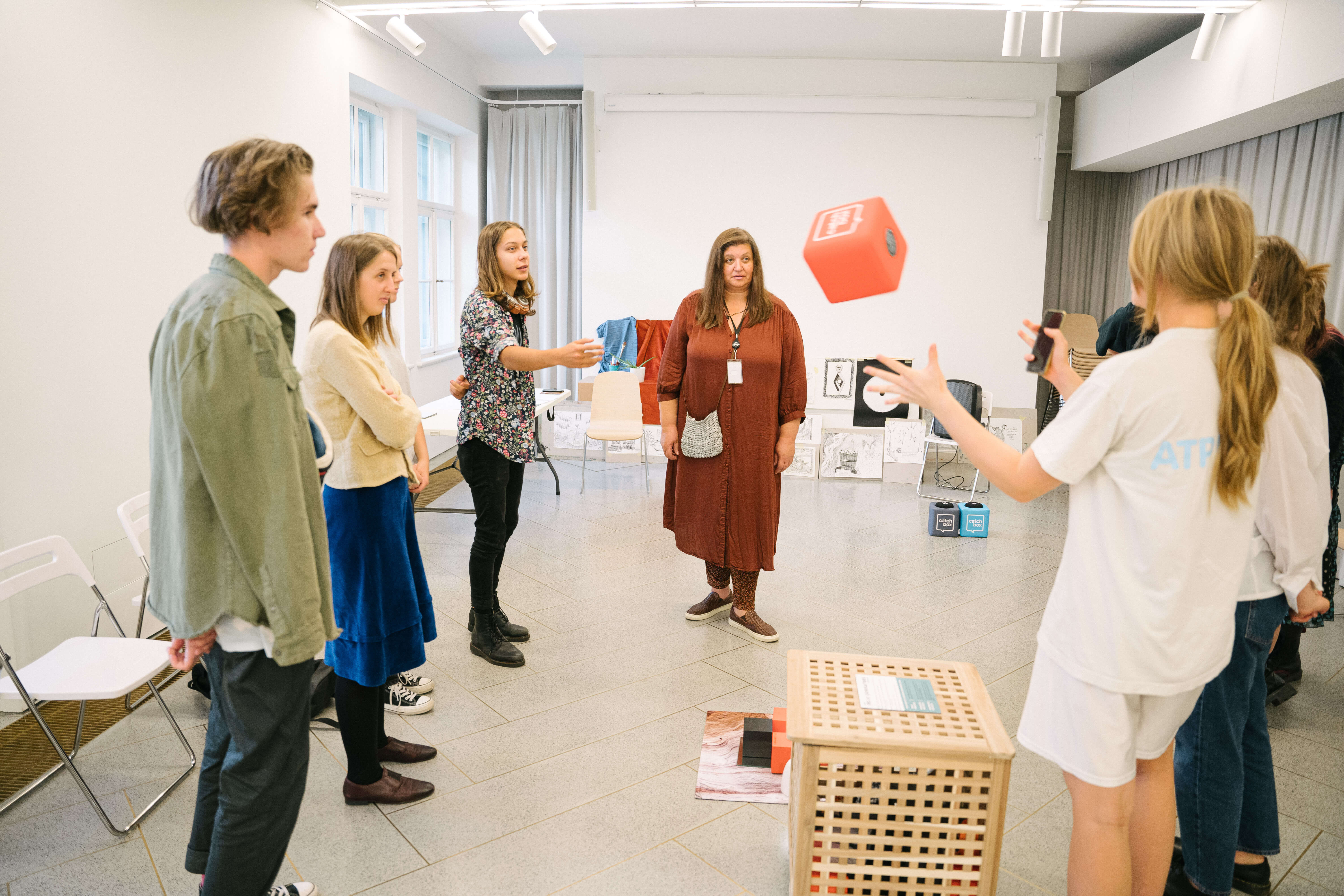Ceiling array microphone alternative
4 reasons to choose Catchbox Plus
For many universities, array microphones felt like the missing piece of the puzzle to enable truly hybrid learning environments. Mounted to a ceiling or wall in an auditorium, array mics would unobtrusively capture audience audio allowing students connecting remotely to not only hear the lecturer but their in-person peers, too.
At least, that was the idea. Now, many of these same universities find themselves seeking an alternative to ceiling mics.
Between astronomical costs, sound issues, and the realization that a microphone designed for compact meeting rooms might not be the most suitable solution for spacious lecture halls, the price-to-performance ratio expected of such a high-end solution just isn't there.
As far as alternatives to array mics are concerned, universities are left with the option to either plant a microphone in front of every in-class student or use some handheld ones to pass around.
Or, an increasingly popular choice – use Catchbox Plus.

Catchbox – the ideal microphone for hybrid lecture halls
Catchbox Plus is a two-channel microphone system. The system features Cube, a throwable wireless microphone encased in a soft, antimicrobial cover that can be easily, quickly, and safely passed around from student to student.
Getting the microphone directly in front of who's speaking means remote participants receive crisp, high-quality audio, never missing a word of in-class discussions, thus truly and efficiently bridging the gap between the two separate audiences.

4 reasons why universities choose Catchbox as an alternative to array mics
Beyond its affordability, there are 4 key considerations that we have heard from higher learning institutions on why they prefer a Catchbox system over array mics.
1. Superior sound quality
Unlike ceiling microphones, Catchbox products are designed to be close to the source of sound – right in front of the person talking. This eliminates virtually all interference and background noise, which are common issues with array mics.
Despite the advanced algorithms that help array mics focus in the direction of the primary source of sound, the distance between the microphone and the speaker inevitably leads to undesirable noise getting picked up, affecting the quality of sound.
Soundproofing the lecture hall, keeping windows closed, and maintaining complete silence among students can certainly minimize interference, however, this comes with financial and engagement costs.
The Cube mic, on the other hand, will perfectly capture speaker audio even amidst the healthy and inevitable background bustle typical to a lecture or seminar. This means a great audio experience for remote students and, in case of lecture capture, a high-quality, untarnished recording.
2. Quick and simple setup
Array microphone installation is a challenge, to say the least. Mounting a unit to the ceiling might be frowned upon in historical spaces. It also requires a nearby power source or extensive wiring and can pose a technical challenge.
It's far easier with Catchbox Plus – anyone can set it up in mere moments by simply plugging the receiver into a computer or whatever audio system you use. Beyond eliminating the need for permanent alterations to a lecture hall, the simplicity of plug-and-play allows you to start using the Catchbox the moment you receive it and, perhaps most importantly, alleviates tech anxieties for educators.
With a university's AV team capable of internally managing everything on the spot, troubleshooting and maintenance are a breeze, ensuring you have functional equipment at all times and class isn't majorly disrupted by tech issues.
3. Turns any room into a hybrid classroom, regardless of size
The simplicity of setup leads to another major benefit Catchbox has over array microphones – where ceiling mics are a permanent installation, a Catchbox can easily be relocated to wherever it's needed.
Its flexibility and portability allow a lecturer to take it with them from one room to another, turning any space into a hybrid learning space. Operating on the DECT frequency and with a range of 100m/330 ft, a Catchbox will work equally well as in the biggest halls, so in the coziest seminar rooms.
Not only does this bring down expenses significantly, it also avoids the need to create dedicated hybrid learning halls and ensures educators and students can work with familiar equipment regardless of venue.
4. Encourages active learning and listening
Whether we're talking about primary school children or graduate-level students, virtually everyone finds passing the Catchbox around to be highly engaging. The soft casing makes it possible for it to be safely thrown between students and protects the microphone within from any damage in case it falls to the ground. Catchbox automutes when passed around, so no whooshing sounds for those at home.
In contrast to array mics, where participants often find themselves sitting like statues for fear of creating disruptive noise that might get picked up, Catchbox makes people feel comfortable to act freely in the classroom, without worrying whether they're shuffling papers or typing too loudly.
Moreover, it places focus on the main speaker, ensuring that everyone pays attention to what's being said and allowing reserved students to express themselves clearly in a more inclusive environment.

The final piece of the puzzle
Most institutions, lecturers, and students may have mastered remote education, but hybrid learning continues to pose a challenge, particularly as far as connecting audiences is concerned.
Unlike for fully remote learning, there is no definitive and established tech setup that will work for every hybrid environment. It's clear that array microphones aren't the answer that everyone expected them to be and this has put institutions back on the road in their quest to find a solution to their audio troubles.
Increasingly, however, their long journeys stop with Catchbox – the best alternative for array microphones.
Learn more about Catchbox for education here.

Catchbox Plus
Catchbox for universities
See how Catchbox Plus could help you capture audio from anywhere.